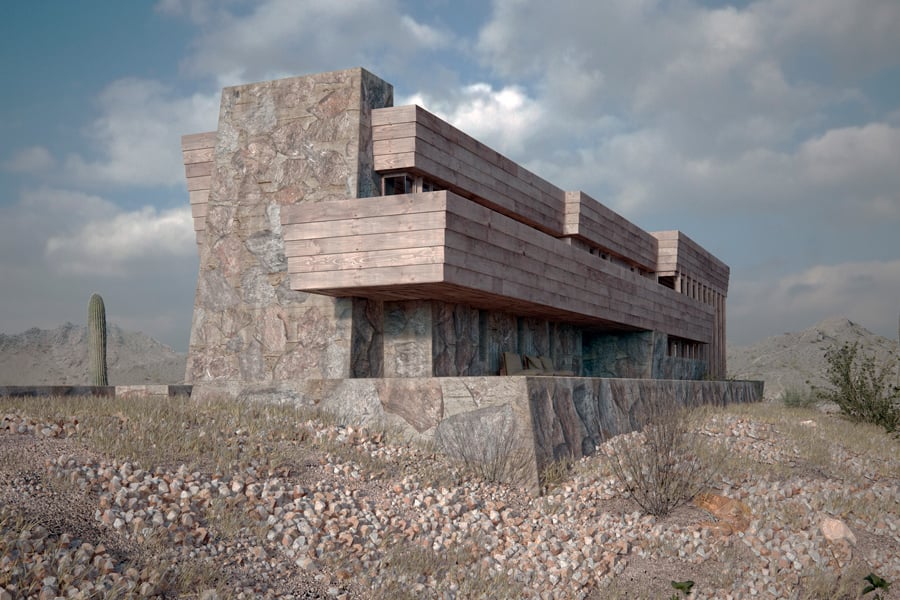
September 13, 2017
Aging and Demolished Frank Lloyd Wright Projects Prompt a New Look at Experimental Preservation
A slew of experimental restoration projects are intersecting with Wright’s ideas in interesting ways.
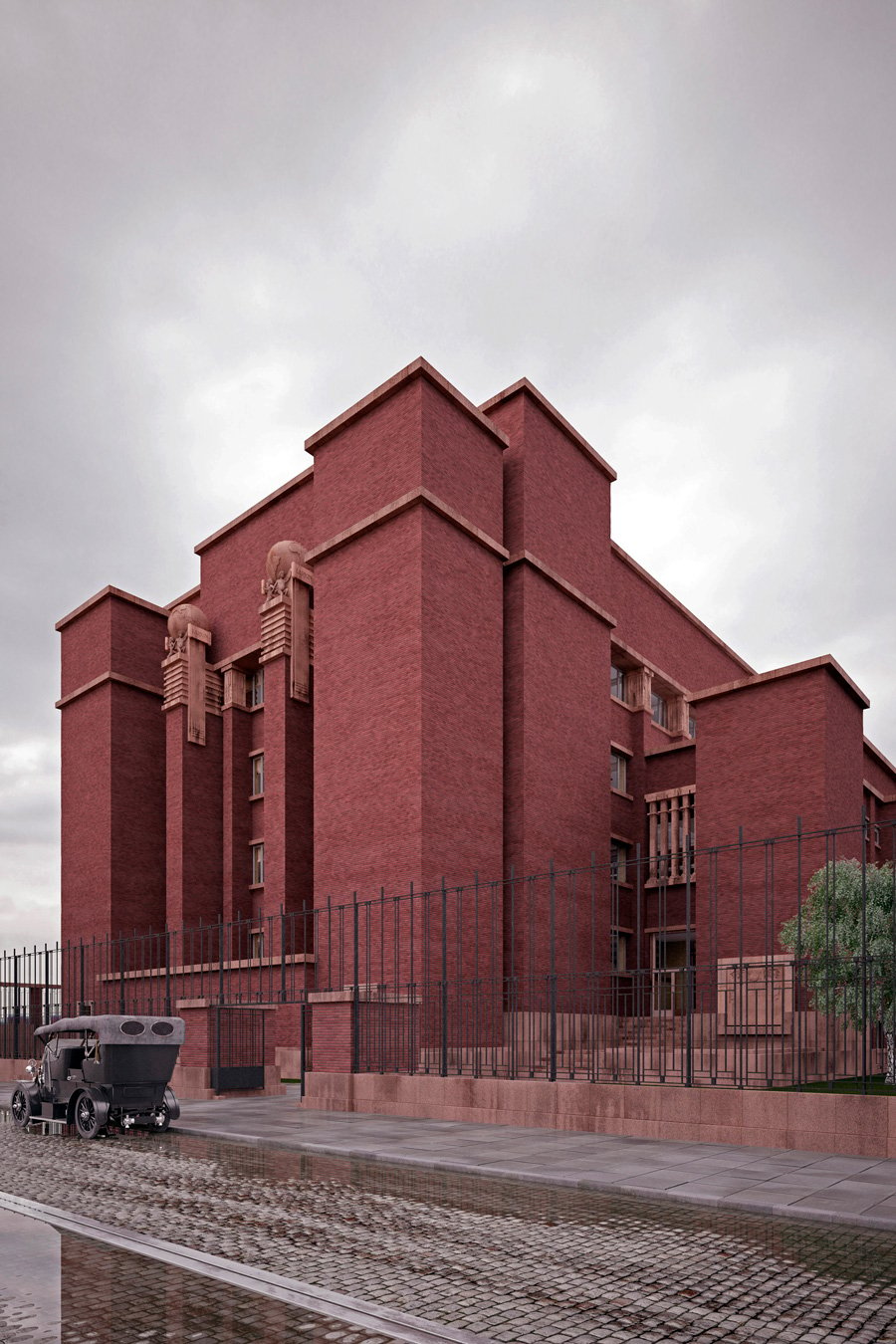
There are 71 public Frank Lloyd Wright sites across the United States—a small portion of the 500-plus projects the architect completed in his lifetime—and some of them are celebrating history-making restorations as many museums and cultural institutions honor the architect’s 150th birthday this summer.
Renowned preservationist Gunny Harboe presented a 740-page master plan and working document for Taliesin West in 2015, recommending a scope of work that would focus on the period when Wright was making constant changes to the site (1938–59). Today, Harboe is helping the Frank Lloyd Wright Foundation develop a new roof system over the drafting room, office, and garden room similar to the dynamic panels of canvas that were once integral to the building, but with a modern technical fabric that will keep people cool inside in August. Wright was constantly tweaking the original panels to achieve a level of openness and quality of light he desired, says Harboe.
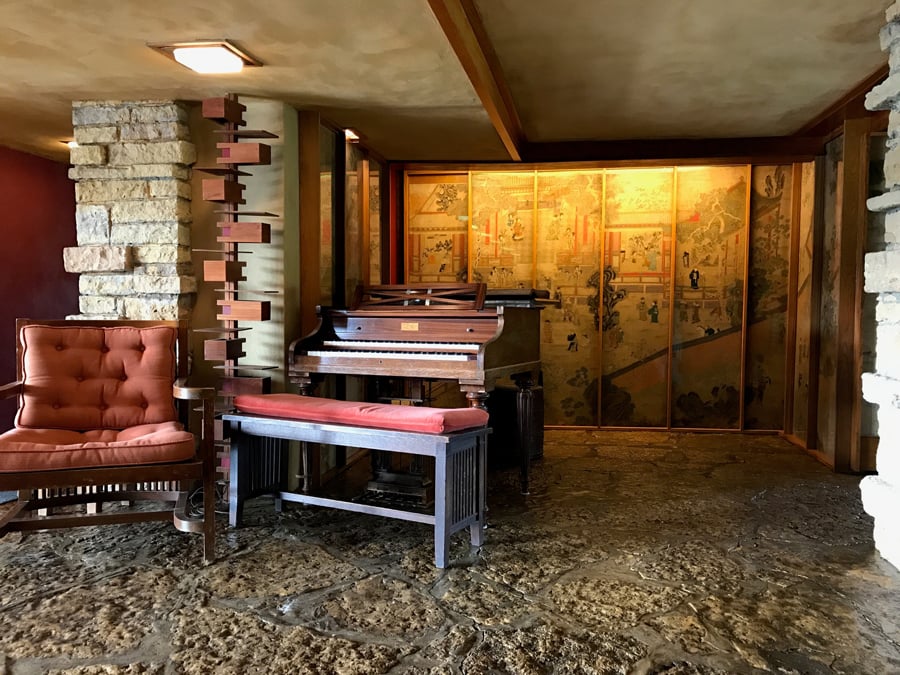
Wright’s Unity Temple (1908) in Chicago, closed since 2015, reopened in June after a painstaking, $25 million, restoration, also by Harboe Architects. Moving east, in Buffalo, New York, Wright’s “opus,” as he called the Darwin D. Martin House (1903–05)—a six-structure, 1.5-acre estate— is entering the final phase of its 20-year restoration by HHL Architects and engineers at Robert Silman Associates. In Spring Green, Wisconsin, Taliesin’s 800 acres long served as Wright’s architectural laboratory, says Ryan Hewson, the property’s collection and preservation project manager. His team is wrapping up several major projects, including installing a heating system in the main residence (with an eye toward installing geothermal wells on the premises in the near future), restoring the guest wing, shoring up the structure, and conserving a 12-panel Chinese screen for its “triumphant return” across three walls.
These ambitious projects are a boon for scholars and visitors, yet it’s not surprising that skills and resources are being invested in some of Wright’s most iconic works: His key designs have been part of the preservation canon—de facto objects for saving—since before his death. What’s perhaps more intriguing, though, is to see a bubbling up of more experimental projects that wrestle with Wright’s ideas while creating new work, asking questions about authorship, originality, and why (and for whom) we’re saving things.
One of those experiments was completed in 2015, when a team of students and faculty from the Living Environments Laboratory (LEL) at the University of Wisconsin at Madison took 80 high-resolution laser scans and numerous quadcopter videos of Taliesin and its estate and transformed the resulting 3D point cloud into a fully immersive virtual tour. By adding Taliesin Spring Green to its library of scans and taking it on the road, LEL can introduce the estate to people who may never be able to visit the building in person, or expose nuances that even those who have visited may have missed.

Then there’s David Romero, a Madrid-based architect who has rendered—in pristine detail— Wright’s Larkin Administration Building (1904–06) and Rose Pauson House (1940–42), among others, using AutoCAD rendering plug-ins and Adobe Photoshop. The six-story steel and redbrick Larkin Building in Buffalo, with pink-tinted mortar, was built for the Larkin Soap Company and demolished in 1950. (Romero also just released an app that allows viewers to tour the Larkin Building in VR.) The Phoenix-based Pauson House burned down in 1943. Romero has said that he sees his work as a time machine, allowing people to experience buildings that haven’t existed for decades. The images are provocative, too, raising questions about the limits of virtual re-creation and the practicality and even morality of bringing structures back from the dead. “That a picture is worth a thousand words is still a reality that, for better or worse, fits perfectly into the supersaturated information age in which we live,” says Romero. He hopes that his work raises awareness about the need to continue to preserve masterworks of the 20th century.
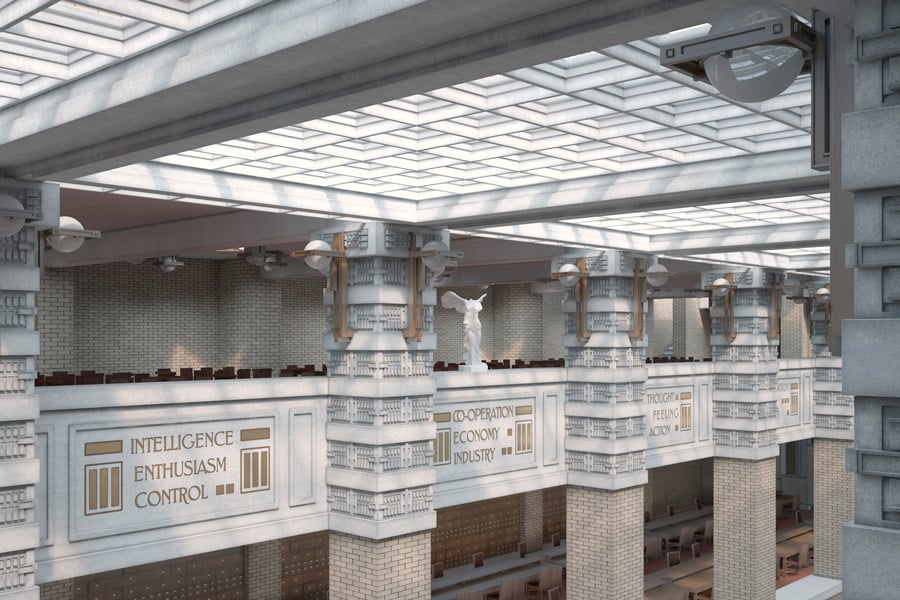
Reflecting on Romero’s work, Hewson acknowledges that there isn’t a perfect replacement for visiting a site like Taliesin Spring Green and seeing a set of stairs worn by Wright’s feet and those of visitors such as Spiro Agnew and Buckminster Fuller. Still, he believes there is a place for these experimental projects—not least because they may involve less time and money and fewer resources. “They complement each other,” he says. “The digital re-creations are a fitting way to examine Wright’s unbuilt or destroyed structures. They are a conjecture.” It also seems more “honest” to him than physically constructing a building that was never built.
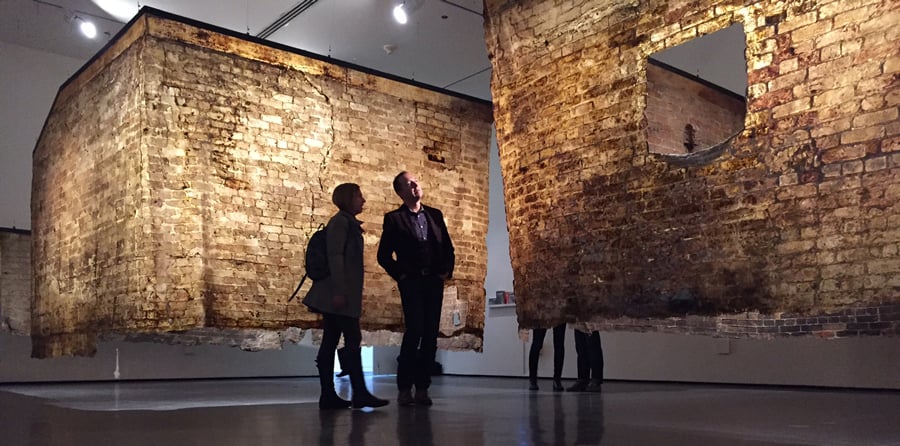
Taliesin in 3D and Romero’s images and virtual reality tours—as well as simply the idea of playing with historical “honesty”—highlight a larger trend of “experimental preservation” that has been gaining more exposure in the last ten years. As one of its leading champions and practitioners, Jorge Otero-Pailos, writes in the introduction to Experimental Preservation (Lars Mũller Publishers, 2016), “The words experimental and preservation have, until very recently, been kept at a safe distance from each other. Experiment suggests the dangerous possibility of failure, something to avoid when working on valuable historical and cultural objects.”

Otero-Pailos, an architect, artist, theorist, and the director of historic preservation at Columbia University’s Graduate School of Architecture, Planning, and Preservation (GSAPP), says that it is this very risk that is needed to protect objects for the future and extract what they can tell us about today. What is their role? One of them, says Otero-Pailos, is to help us transition from one moment to another, one cultural reality to another. The buildings we decide to preserve provide us with a continuity of experience during times of huge disruption, due to, for example, globalization, climate change, and technology. There is also a sense that experimental preservationists—who come from many disciplines, not only architecture—are putting vital pressure on institutions and organizations, from governments to corporations, that decide what heritage is and is not.
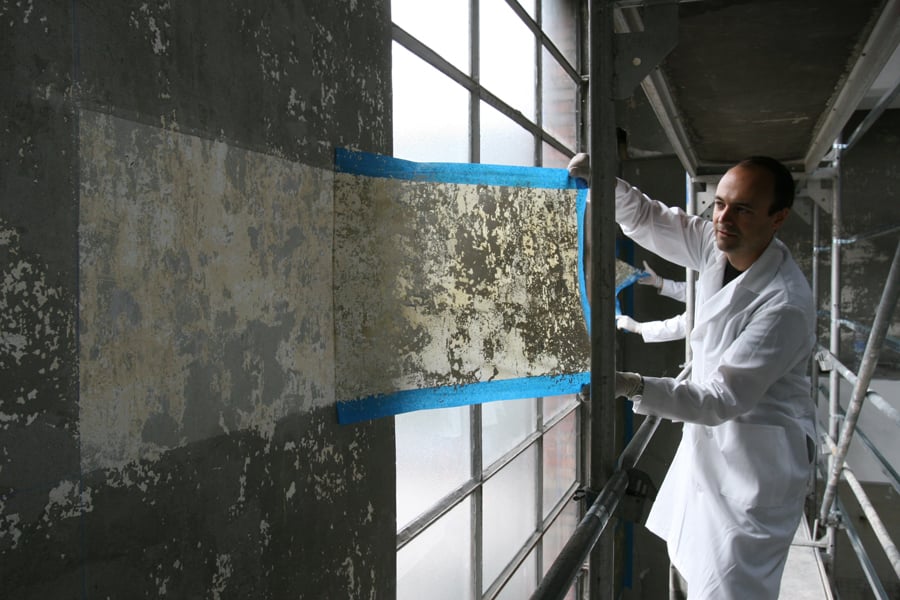
Once you become attuned to these projects, you begin to see experimental preservation everywhere. “I think the discourse is finally absorbing a lot of poststructuralist cultural theory about authorship and the importance of interpretation, as well as political critique of existing power structures,” says Bryony Roberts, a designer, artist, and scholar. She taught a studio this spring at GSAPP that resulted in an exhibition at St. Luke’s Episcopal Church in Harlem, New York on the challenges facing historic churches in the neighborhood, as well as proposals for reimagining their social and architectural future. The churches became important institutions for organizing the artistic, social, and political life of blacks in Harlem, especially during the civil rights era. These deteriorating 19th-century structures have since undergone rapid change, as historically black congregations have dwindled due to the displacement of parishioners from the neighborhood.
Roberts and her students used a values-based process to explore the churches—considering more than just architectural history. “With these sites in particular, it was clear that no matter how much you cared about the architectural value, if you didn’t make a case for a social and economic value, they were going to be demolished,” says Roberts. The resulting exhibition was a series of interlocking wood panels whose forms echoed the arches of St. Luke’s and its stained-glass windows, and the students proposed financial and programmatic models that would generate income for social services and worship through the leasing of sanctuary space and adjacent land for events, or even as coworking spaces. While the exhibition may not sound all that wild, the way Roberts had her students approach the project is an example of how experimental preservation heightens the stakes around what we save.
Much experimental preservation expands and contracts not only time, but also scale, through digital technology—like Romero’s work. In 2014, artist Adam Lowe replicated Tutankhamen’s tomb in the Valley of Kings using 3D laser scanning. Lowe’s company, Factum Arte, has created exact replicas of other works of art and architecture, creating what he has called “noncontact preservation.” He argues that his replica of the tomb helps save the original from the deleterious effects of visiting tourists and offers a version for the kind of forensic study that the original can’t provide.
Another project pokes at the limits of the digital copy, while not dismissing it entirely. For the 2016 Venice Biennale, architects Mark Smout and Laura Allen worked with London’s ScanLAB projects to create a 3D copy of Peter and Alison Smithson’s 1972 housing estate Robin Hood Gardens. A British politician had suggested it should be torn down and that a digital scan of the building would suffice in its physical absence. But, Smout Allen’s scan couldn’t capture all of Robin Hood’s surfaces perfectly, challenging the idea that a digital scan is a perfect replica.
These are just a handful of the many experimental projects that expose well-known, obscure, or even mundane objects, sites, and buildings for the lessons they can teach us or the stories they can help us piece together about who we are. As traditional institutions—from religious organizations to nation-states, as Otero-Pailos points out—divest from their caretaking of these sites, it is up to others to pick up the mantle. Experimental preservationists are stepping in to help navigate a reality we find as problematic as it is sure: Everything changes. Even the Taliesins of this world.
If you enjoyed this article, you may also like “A Sustainable Way of Life: Taliesin West Continues Wright’s Legacy.”








